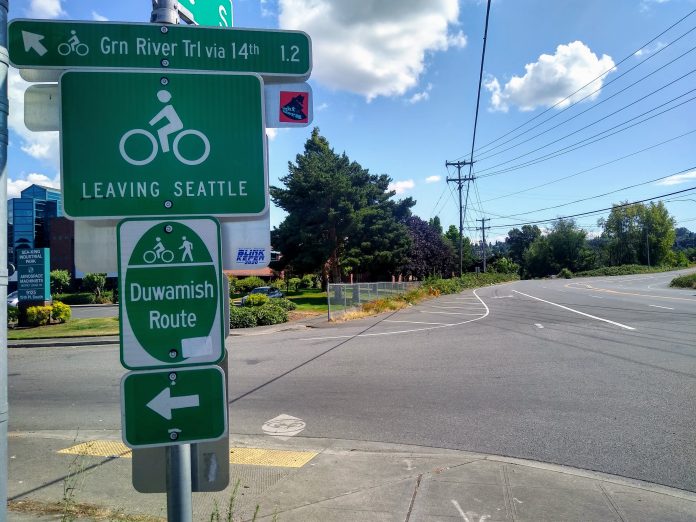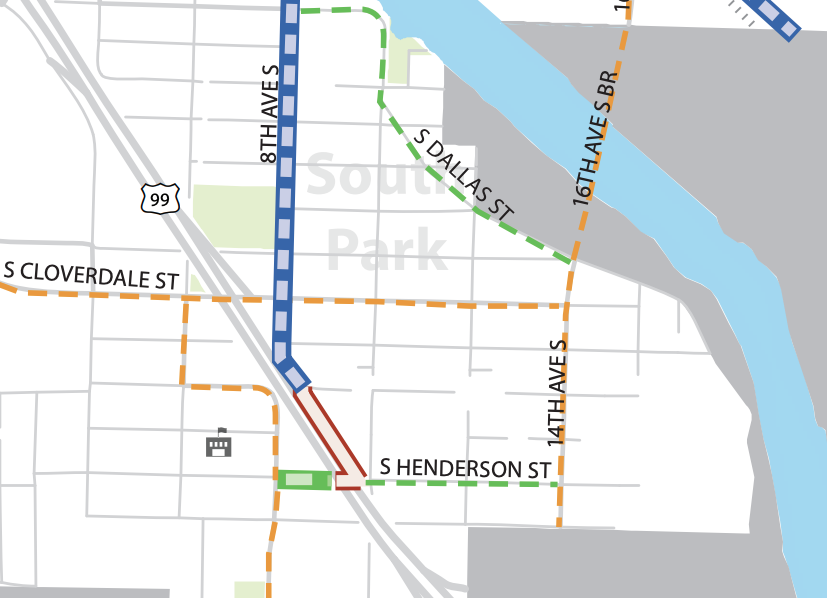The Green River Trail is one of the longest regional trails in Washington, covering more than 19 miles through south King County through cities like Kent and Tukwila. It also connects directly with the south line of the regional Interurban Trail, allowing trail users to access places like Auburn, Pacific, and Algona. The Green River Trail’s north end gets tantalizingly close to Seattle, but currently accessing the trail from the north requires dealing with W Marginal Place, a frontage road to State Route 99, where freight traffic can be heavy and there is no separated facility for bikes.
King County is currently designing a trail extension that would build a new section of trail all the way to S Director Street and 14th Ave S — Seattle’s city limit in South Park. Currently it’s hard to even find the route to the Green River Trail from that spot, with a narrow sidewalk running alongside a highway on-ramp not intuitive as a trail connection. Extending a standard-width trail all the way to Director Street should make the trail much more accessible and visible from the heart of South Park.
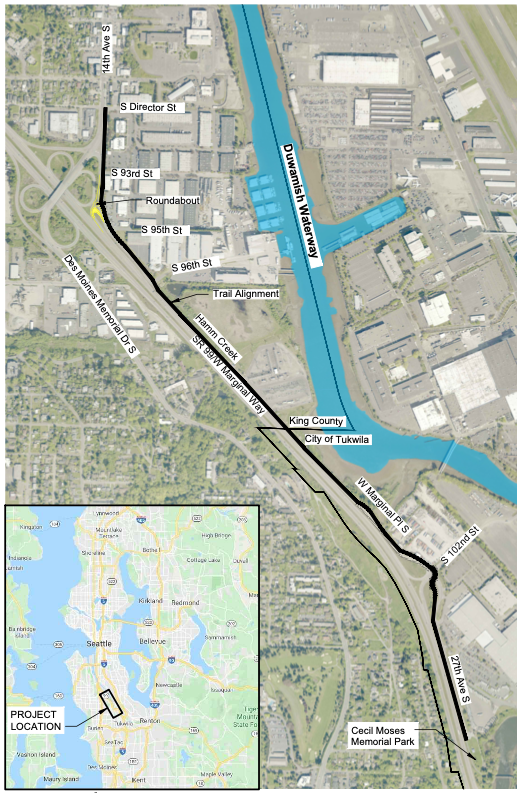
West Marginal Place, alongside West Marginal Way, aka SR-99 in this segment, is a two lane frontage road with no shoulder, and to access the trail from South Park riders have to use this road for about a mile. The design for the trail extension will actually eliminate the northbound lane of West Marginal Place for one half of a mile, between S 102nd and S 96th Street.
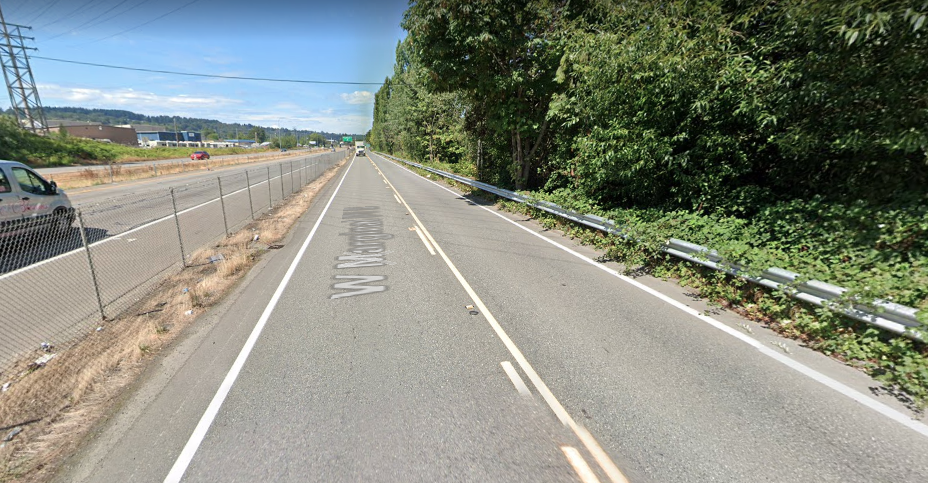
Eliminating the northbound lane was the only way a trail could be designed to be added to that route, according to the county. To accommodate vehicle traffic that would be using that northbound lane, King County is currently proposing to add two roundabouts along Marginal Place so drivers can utilize SR-99 as a northbound lane along that segment.
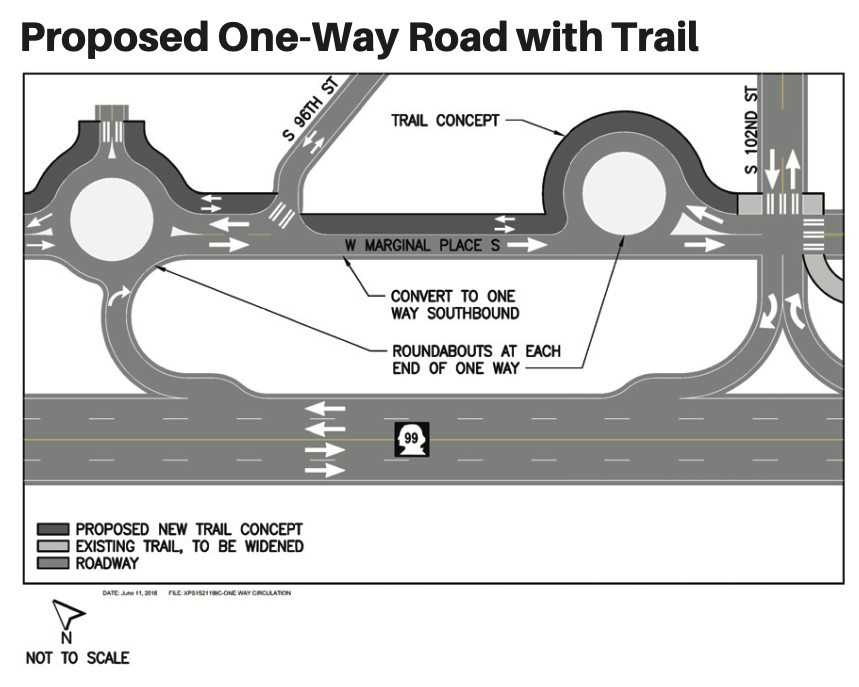
The trail along the segment that’s been reduced to one lane will be a bit less than standard trail width, and could be uncomfortably close to trucks utilizing the eleven foot lane next to the trail. But it will be a million times better than contending with the truck traffic from Marginal Place.
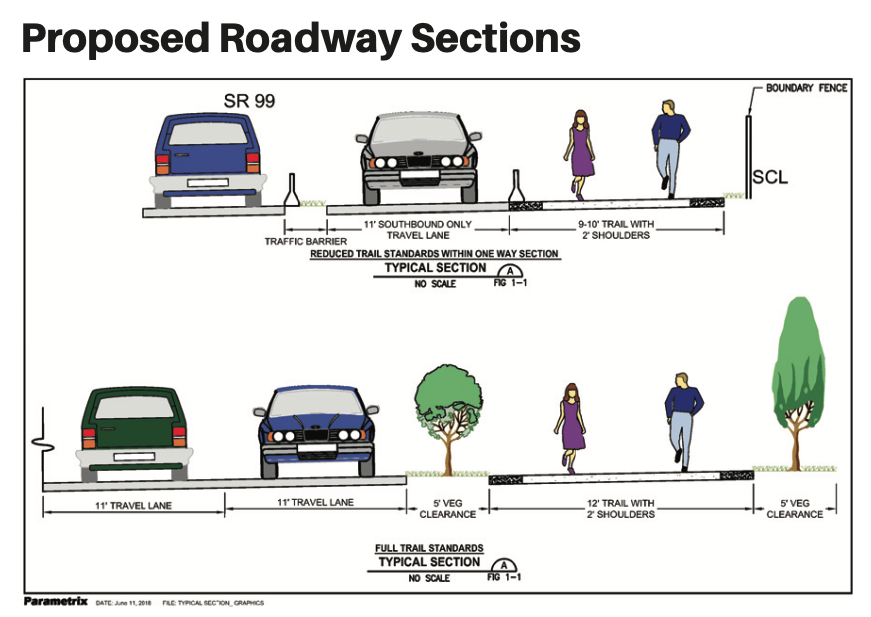
This trail extension will get people to 14th Ave S at South Park’s far southern border, but Seattle could do more to extend the trail’s reach by improving connections to it. The Bicycle Master Plan envisions 14th Ave S as a candidate for “in-street, minor separation” — aka painted bike lanes — it’s currently a four lane street with no bike markings and parking on both sides with peak hour restrictions. The Georgetown to South Park trail doesn’t plan any improvements on the South Park bridge itself, which directly connects to 14th Ave S, but the bridge does have paint bike lanes and separated sidewalks. That gap on 14th Ave S is just waiting to be filled in, with the most likely way to do that being the same sidewalk expansions that are going in on Georgetown streets to create the Georgetown to South Park trail.
The other major connection in South Park is to the Duwamish Trail, the main segment of which starts at the north end of 8th Avenue S. But Henderson Street, one block north of Director, also provides a bike connection to access a short, disjointed segment of the Duwamish Trail along SR-99 (shown in red above) that provides a shortcut around 14th Ave. The problem with that route is that Henderson is very steep for westbound users. SDOT is also working on a new neighborhood greenway network, funded by the Reconnect West Seattle program as part of the West Seattle Bridge closure response, that will provide traffic calming that will increase connectivity between areas around the South Park Bridge, Duwamish Trail, and South Park activity centers.
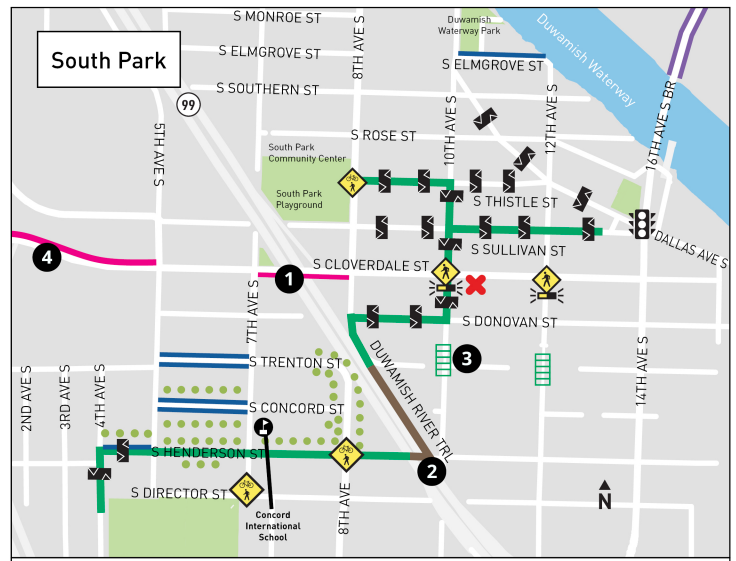
All of these pieces have the potential to come together to allow South Park residents and all Seattleites to take full advantage of King County’s planned extension of the Green River Trail, which is slated to start construction in 2023. Finding a way to fund and complete these connections should be a high priority.
Ryan Packer has been writing for The Urbanist since 2015, and currently reports full-time as Contributing Editor. Their beats are transportation, land use, public space, traffic safety, and obscure community meetings. Packer has also reported for other regional outlets including Capitol Hill Seattle, BikePortland, Seattle Met, and PubliCola. They live in the Capitol Hill neighborhood of Seattle.


